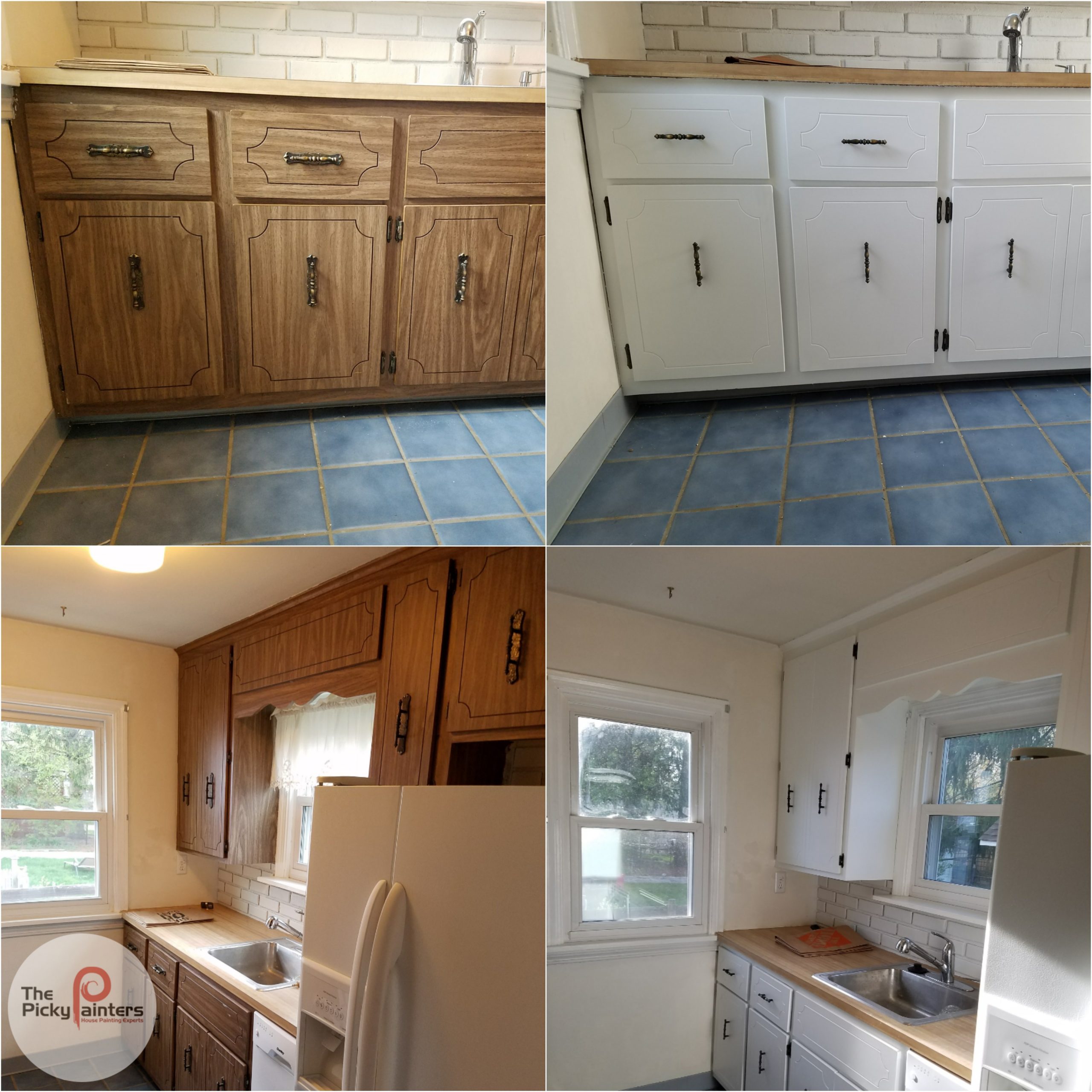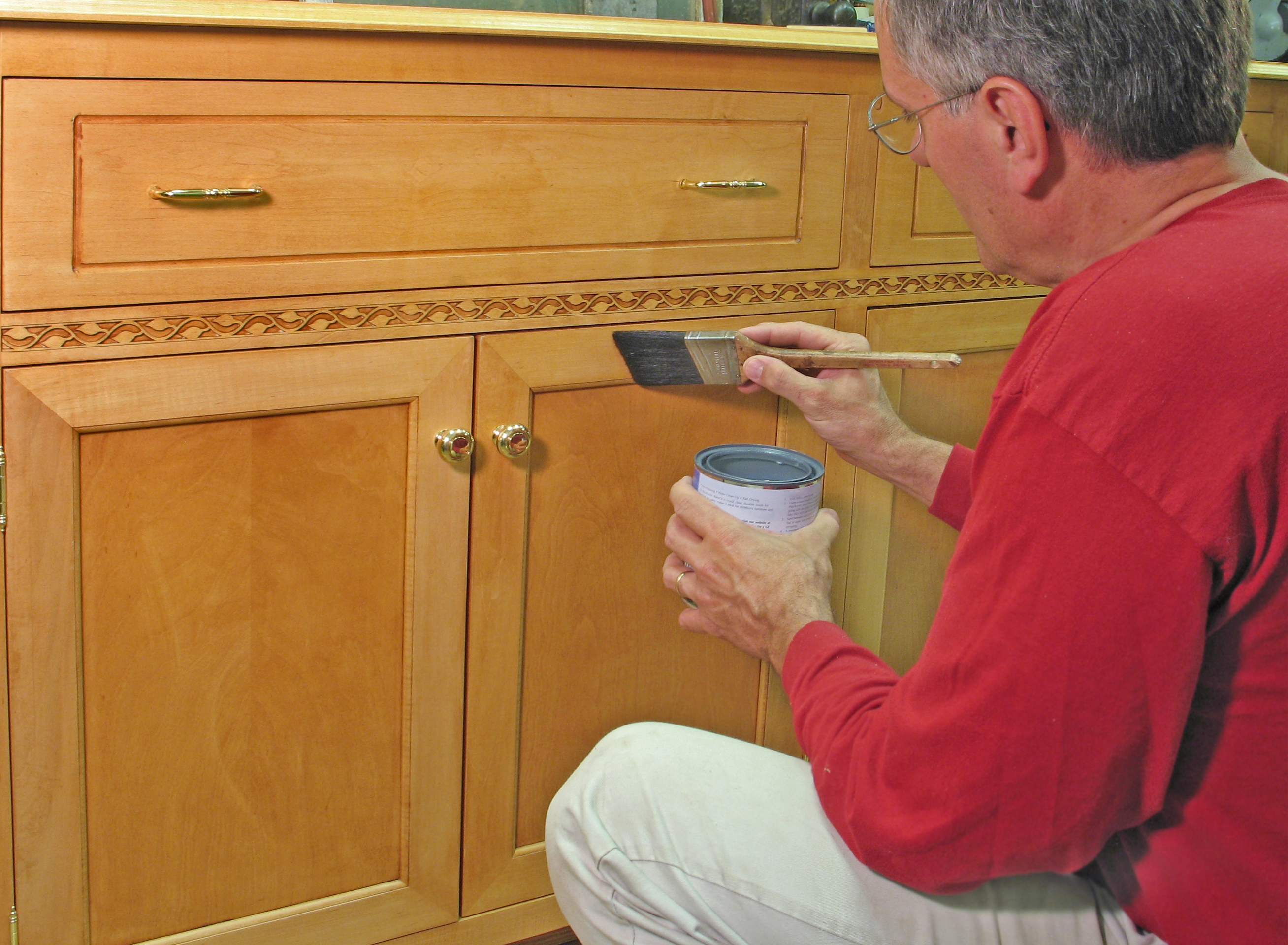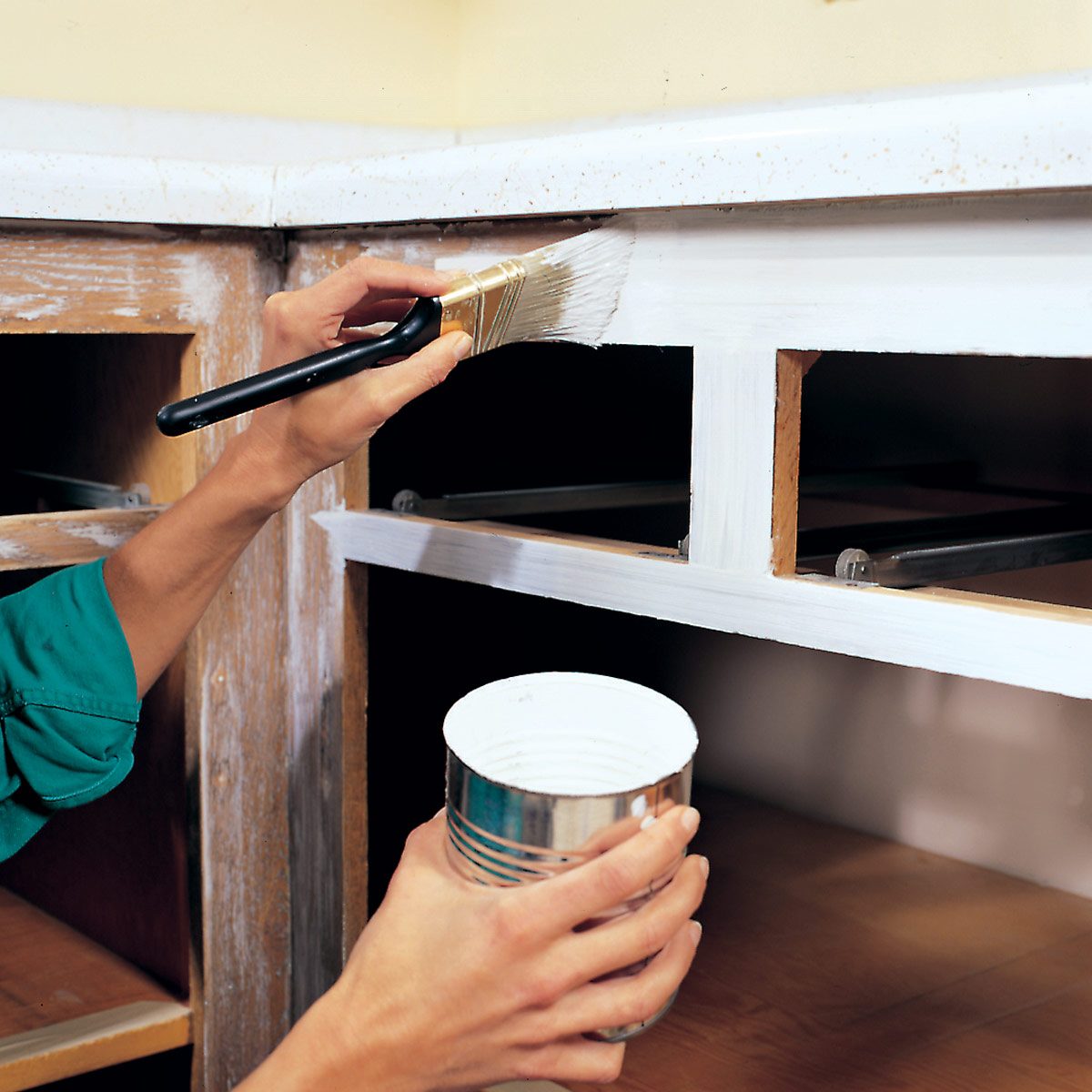Understanding the Difference Between Real Wood and Painted Cabinets

Choosing between real wood and painted cabinets is a significant decision in any kitchen remodel. Both options offer distinct advantages and disadvantages, influencing the overall aesthetic, functionality, and longevity of your kitchen. This guide explores the key characteristics of each material, helping you make an informed choice based on your needs and preferences.
Real Wood Cabinets
Real wood cabinets are known for their natural beauty, durability, and potential for customization. They exude warmth and sophistication, adding a timeless elegance to any kitchen.
Durability and Longevity
Real wood cabinets are inherently durable and can withstand the test of time. Solid wood construction, especially hardwoods like cherry, maple, or oak, offers exceptional strength and resilience. Proper care and maintenance ensure their longevity, often lasting for generations.
Natural Beauty and Uniqueness
Each piece of real wood possesses unique grain patterns and color variations, adding character and charm to your kitchen. The natural beauty of wood creates a warm and inviting ambiance, contributing to a cozy and comfortable atmosphere.
Customization Options
Real wood cabinets offer unparalleled customization options. You can choose from a wide range of wood species, finishes, and hardware to personalize your cabinets according to your taste and style. The flexibility in design allows for intricate details and unique features, making your kitchen truly one-of-a-kind.
Painted Cabinets
Painted cabinets offer a more affordable and versatile alternative to real wood. They provide a blank canvas for your creativity, allowing you to express your style through a vast array of colors and finishes.
Affordability
Painted cabinets are generally more affordable than real wood cabinets, making them an attractive option for budget-conscious homeowners. The lower cost is due to the use of less expensive materials like plywood or medium-density fiberboard (MDF) as the base for the cabinet boxes.
Versatility in Color and Style
Painted cabinets offer endless possibilities for color and style. You can choose from a wide spectrum of colors, from classic white to bold hues, to create a unique and personalized look. Various paint finishes, such as gloss, matte, or satin, can further enhance the visual appeal and texture of your cabinets.
Ease of Maintenance
Painted cabinets are generally easier to maintain than real wood cabinets. They are less susceptible to scratches and dents, and their smooth surface can be easily cleaned with a damp cloth. This makes them a practical choice for busy families or those who prefer a low-maintenance kitchen.
Comparing Real Wood and Painted Cabinets
| Feature | Real Wood Cabinets | Painted Cabinets |
|---|---|---|
| Cost | More expensive | More affordable |
| Durability | Highly durable, especially hardwoods | Durable, but susceptible to scratches and dents |
| Aesthetics | Natural beauty, unique grain patterns | Versatile, wide range of colors and finishes |
| Customization | Highly customizable | Limited customization, primarily in color and finish |
| Maintenance | Requires regular care and maintenance | Easy to clean and maintain |
Exploring the Construction of Painted Cabinets: Painting Cabinets Not Real Wood

Painted cabinets, while often perceived as a decorative choice, rely on a robust construction process that determines their durability and longevity. Understanding the materials and techniques involved is crucial for making informed decisions about your kitchen or bathroom cabinetry.
Materials Used in Painted Cabinet Construction
The materials used in constructing painted cabinets significantly impact their quality and lifespan. While real wood cabinets offer a traditional and timeless aesthetic, painted cabinets often utilize engineered wood products like plywood, MDF, and particleboard.
- Plywood: A versatile material made of thin layers of wood veneer glued together with alternating grain directions. This construction provides strength and stability, making it suitable for cabinet frames and doors. Plywood is known for its resistance to warping and twisting, contributing to the overall durability of painted cabinets.
- MDF (Medium-Density Fiberboard): Created by combining wood fibers with resin and pressing them under heat and pressure. MDF offers a smooth, uniform surface, making it ideal for cabinet doors and drawer fronts. Its dense structure allows for intricate details and precise cuts, facilitating a smooth finish for painting.
- Particleboard: Made from wood chips or sawdust bonded together with resin. Particleboard is a less expensive option than plywood or MDF but is less durable. While suitable for cabinet boxes, it is often not recommended for cabinet doors due to its susceptibility to moisture and warping.
The Construction Process of Painted Cabinets
The construction process of painted cabinets involves precise cutting, assembly, and finishing techniques. This process ensures a durable and aesthetically pleasing end product.
- Cutting: Cabinet components are cut to precise dimensions using specialized machinery. The accuracy of these cuts is crucial for the proper assembly and alignment of the cabinets.
- Assembly: Cut pieces are joined together using various methods, such as dowel joints, pocket holes, or dado joints. The chosen method depends on the specific design and intended use of the cabinet.
- Finishing: After assembly, the cabinet surfaces are prepared for painting. This typically involves sanding to smooth out any imperfections and applying a primer to ensure the paint adheres properly.
- Painting: Multiple coats of paint are applied to the cabinet surfaces. The number of coats and the type of paint used can affect the final finish and durability of the cabinets.
The Impact of Materials and Construction Methods on Durability
The quality of materials and construction methods directly impact the durability and longevity of painted cabinets.
- High-quality materials, such as plywood and MDF, are more resistant to warping, moisture damage, and scratches. These materials contribute to the longevity of painted cabinets, making them suitable for long-term use.
- Precise cutting and assembly techniques ensure that the cabinets are properly aligned and sturdy. Well-constructed cabinets are less prone to sagging or loosening over time.
- Proper finishing, including sanding and priming, prepares the surfaces for painting and enhances the durability of the paint finish. This prevents chipping and peeling, ensuring the paint lasts longer.
Choosing the Right Paint for Kitchen Cabinets

Selecting the right paint for your kitchen cabinets is a crucial decision that impacts their appearance, durability, and overall functionality. The paint you choose should be able to withstand the wear and tear of daily use, including spills, heat, and moisture, while providing a beautiful finish that complements your kitchen design.
Types of Paint Finishes for Cabinets, Painting cabinets not real wood
The finish of your cabinet paint determines its sheen and how it reflects light. It also affects the ease of cleaning and the overall look of the cabinets. Here’s a breakdown of the most common paint finishes for kitchen cabinets:
- Gloss: Gloss paints offer the highest sheen and reflect the most light. They are very durable and easy to clean, making them ideal for high-traffic areas like kitchens. However, they can also highlight imperfections in the cabinet surface.
- Semi-gloss: Semi-gloss paints offer a moderate sheen and are a good balance between durability and ease of cleaning. They are less reflective than gloss paints, making them a popular choice for kitchens.
- Satin: Satin paints have a soft sheen and offer a good balance between durability and a warm, elegant look. They are easier to clean than matte paints and less reflective than semi-gloss paints.
- Matte: Matte paints have a flat finish and absorb light rather than reflecting it. They are the least durable and hardest to clean but offer a sophisticated and understated look.
Choosing the Right Paint Type
The type of paint you choose for your cabinets will depend on your specific needs and preferences. Here are some key factors to consider:
- Durability: For kitchen cabinets, durability is essential. Look for paints that are known for their resistance to scratches, chips, and stains. Acrylic latex paints are generally a good choice for kitchen cabinets due to their durability, ease of cleaning, and low odor.
- Ease of Cleaning: Kitchen cabinets are prone to spills and splatters, so choose a paint that is easy to clean. Gloss and semi-gloss paints are generally the easiest to clean, while matte paints are the most difficult.
- Color: The color of your cabinet paint should complement your kitchen design and personal style. Consider the overall color scheme of your kitchen, the size and layout of the space, and the amount of natural light it receives.
Recommended Paint Brands and Products
Several paint brands are known for their quality and performance in kitchen cabinet applications. Some popular choices include:
- Benjamin Moore: Benjamin Moore offers a wide range of high-quality paints for cabinets, including their Advance Interior Acrylic Latex paint, which is known for its durability and ease of cleaning.
- Sherwin-Williams: Sherwin-Williams also offers a variety of high-quality paints for cabinets, including their Emerald Interior Acrylic Latex paint, which is known for its excellent coverage and durability.
- PPG: PPG offers a range of paints for cabinets, including their Diamond Interior Acrylic Latex paint, which is known for its durability and resistance to stains.
Painting cabinets not real wood – Eh, lumayan lah ngecat lemari yang gak kayu asli, daripada ngeluarin duit banyak buat beli yang beneran. Tapi, kalau lo lagi cari tempat tinggal yang cozy di Rensselaer, New York, coba deh cek one bedroom apartments rensselaer ny.
Pasti ada yang cocok buat lo, walaupun lemari nya gak kayu asli, yang penting nyaman kan? Lagian, ngecat lemari juga bisa jadi hobi, kayak ngelukis gitu, tapi di lemari aja.
Eh, ngapain sih ngecat lemari kalo bukan kayu asli? Kayak lagi ngerias jidat pake bedak tebel, ujung-ujungnya tetep keliatan. Mending cari rumah gede aja, biar ga usah mikirin lemari lagi. Nih, ada info 5 bedroom apartments bloomington indiana , lumayan lah buat ngumpulin barang-barang.
Tapi kalo mau ngecat lemari juga, ya terserah, asal jangan pake cat semprot di dalem rumah, ntar bau nya nyebar ke mana-mana.